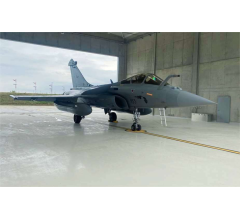The Latest Headlines at Defense World


Russia Denies US Claims of Space-Based Weapon, Tensions Escalate
Key Points: The US has accused Russia of launching an anti-satellite weapon, escalating tensions and raising concerns about the weaponization of space. Russia denies the accusations, calling them “fake news” and... More of this article »
Nordic Investment Bank Eyes Defense Sector
Key Points: Nordic governments are considering expanding the NIB’s mandate to include financing for defense companies, reflecting a shift in strategic priorities. The proposed move aims to leverage the “Nato-dividend”... More of this article »
Germany Embraces Drone Warfare in Response to Russian Threat
Key Points: The German military is actively pursuing the creation of a dedicated “drone army” in response to the evolving security landscape and lessons learned from the Ukraine conflict. The CDU/CSU parliamentary... More of this article »
Britain Invests Big in Next-Generation Missile Technology
Key Points: The UK has announced a £1 billion investment in hypersonic missile development. The project aims to create a domestically built hypersonic missile system, potentially operational by the 2030s. The UK seeks to... More of this article »
Belousov’s Unlikely Ascent in Putin’s War Machine
Key Points: President Putin replaces longtime Defense Minister Sergei Shoigu with economist Andrei Belousov, marking a potential shift in Russia’s war strategy. Belousov’s appointment comes amid intensified Russian... More of this article »
US and China Spar Over South China Sea Passage
Key Points: The Chinese military claims to have “driven away” a US Navy destroyer near the Paracel Islands in the South China Sea. The US maintains that the destroyer asserted navigational rights consistent with... More of this article »
Ukraine Turns to Prisoners as War Effort Intensifies
Key Points: The Ukrainian parliament has passed a law allowing the voluntary mobilization of certain prisoners into the armed forces. The legislation excludes individuals convicted of serious offenses and limits eligibility... More of this article »
China’s Youth: Proposed Law Mandates Military Training in Schools
Key Points: China’s proposed revisions to its National Defense Education Law seek to mandate military training for high school and university students. The changes are driven by economic uncertainties, rising geopolitical... More of this article »
US and Russia Share Tarmac: Tensions Rise as Troops Converge on Niger Airbase
Key Points: US forces are withdrawing from Airbase 101 in Niger following a directive from the country’s military leadership. Russian military personnel have arrived at the same airbase, raising concerns about shifting... More of this article »
Shifting Sands: US-Saudi Defense Pact Aims to Restructure Middle East Dynamics
Key Points: The US and Saudi Arabia are nearing a defense pact that could reshape Middle East geopolitics. The agreement may lead to the normalization of relations between Saudi Arabia and Israel, contingent upon progress towards... More of this article »
French Military to Acquire Strategic Assets from Ailing IT Giant
Key Points: The French government will acquire the strategic assets of Atos, a struggling IT firm, to protect national security and technological independence. Atos plays a critical role in France’s defense infrastructure,... More of this article »
Croatia Bolsters Air Defense with French Fighter Jets
Key Points: Croatia received the first six of twelve Dassault Rafale F3R fighter jets, which significantly upgraded its air force capabilities. The acquisition of the Rafales signifies Croatia’s commitment to modernizing... More of this article »
US Aid Ignites Tensions Between China and Taiwan
US Military Aid to Taiwan Stokes Cross-Strait Tensions Key Points: The US has approved an $8 billion military aid package for Taiwan, sparking strong condemnation from China. Taiwan welcomes the aid, viewing it as crucial... More of this article »
